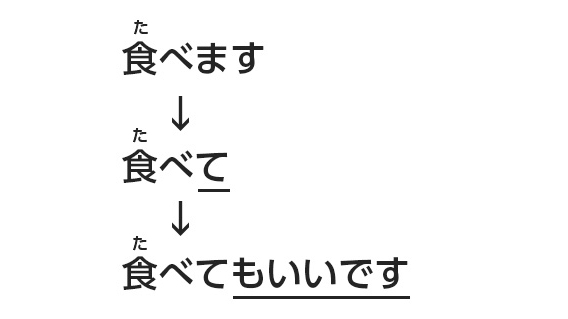Teach Us, Teacher
TE-form verb + MO II DESU KA (Lesson 14)
If the TE-form of a verb and MO II DESU are said together, it means that a permission is granted. That is, the action expressed by the verb is permitted. So, for example, if you want to say to someone "It is okay you eat," or literally "You are allowed to eat," you use the TE form of the verb, TABEMASU (to eat), which is TABETE, and say MO II DESU. So, altogether you say TABETE MO II DESU.
So, for example, if you want to say to someone "It is okay you eat," or literally "You are allowed to eat," you use the TE form of the verb, TABEMASU (to eat), which is TABETE, and say MO II DESU. So, altogether you say TABETE MO II DESU.When you ask for permission, you add KA at the end of the sentence, and say it with a rising intonation. For example, if you want to ask if it is okay to eat the cookies lying right in front of you, you would add KA after TABETE MO II DESU, and to say TABETE MO II DESU KA, (May I eat these cookies?).
 If the other person gives you permission, he or she will say, DÔZO (Please go ahead). Even if you don’t know the TE form of the verb, TABERU, you can point at a food you want to eat, and say, II DESU KA (May I?). Then, people will probably understand what you want. So, this phrase II DESU KA is convenient.
If the other person gives you permission, he or she will say, DÔZO (Please go ahead). Even if you don’t know the TE form of the verb, TABERU, you can point at a food you want to eat, and say, II DESU KA (May I?). Then, people will probably understand what you want. So, this phrase II DESU KA is convenient.